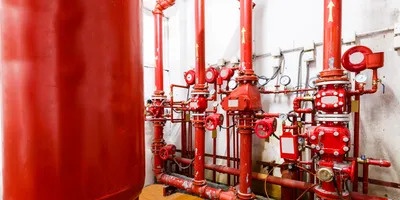Introduction:
Building safety relies on fire protection and life safety systems to ensure the well-being of occupants in the event of a fire. Canadian Standard Association's CAN/ULC-S1001 provides a comprehensive framework for testing integrated systems to ensure their reliability and effectiveness. The aim of this blog is to shed light on the importance of integrated systems testing outlined in CAN/ULC-S1001.
The Essence of CAN/ULC-S1001:
- Holistic Approach:
The CAN/ULC-S1001 emphasizes the importance of testing fire protection and life safety systems holistically. In order to ensure seamless operation during emergencies, these systems must be interconnected and interdependent.
- Cross-System Coordination:
Integrated systems testing involves the coordination and testing of various components, including fire alarm systems, sprinklers, emergency lighting, and communication systems. This ensures that these systems work in harmony, leaving no room for gaps or vulnerabilities.
- Emergency Response Simulation:
One of the key components of integrated systems testing is the simulation of emergency scenarios. This allows for a real-time evaluation of how different systems respond to a crisis, helping identify potential points of failure and areas for improvement.
The Significance of Integrated Systems Testing:
- Early Detection of Issues:
Integrated systems testing provides a proactive approach to identifying and addressing issues before they escalate. Detecting potential failures during simulated emergencies allows for targeted interventions, reducing the risk of system failures during actual crises.
- Comprehensive Evaluation:
By testing the integration of fire protection and life safety systems, CAN/ULC-S1001 ensures a thorough evaluation of a building's overall safety infrastructure. This goes beyond individual system functionality to assess how these systems collaborate to mitigate risks effectively.
- Compliance with Standards:
Integrated systems testing is not only a best practice but is often mandated by local regulations and building codes. Adhering to CAN/ULC-S1001 ensures that buildings comply with these standards, fostering a safer environment for occupants and minimizing legal liabilities.
- Optimization of Emergency Response:
Through simulated emergency scenarios, integrated systems testing facilitates the optimization of emergency response procedures. This includes evaluating the efficiency of communication systems, the responsiveness of sprinkler systems, and the effectiveness of evacuation protocols.
Selecting a CAN/ULC-S1001 Compliant Service Provider:
When it comes to integrated systems testing, choosing a service provider certified under CAN/ULC-S1001 is crucial. Rotaflow is a provider that follows industry best practices and is committed to upholding the highest standards of safety and reliability. All are well-equipped to conduct thorough integrated systems testing, ensuring that all components work seamlessly together to protect lives and property.
Conclusion:
CAN/ULC-S1001, with its emphasis on integrated systems testing, plays a pivotal role in fortifying fire protection and life safety systems. By addressing the interconnected nature of these systems and simulating emergency scenarios, this standard ensures that buildings are well-prepared to face unforeseen challenges. As we strive to create safer environments, CAN/ULC-S1001 sets the stage for a proactive and comprehensive approach to testing, reinforcing the commitment to safeguarding lives and property in the face of emergencies.


No comments yet